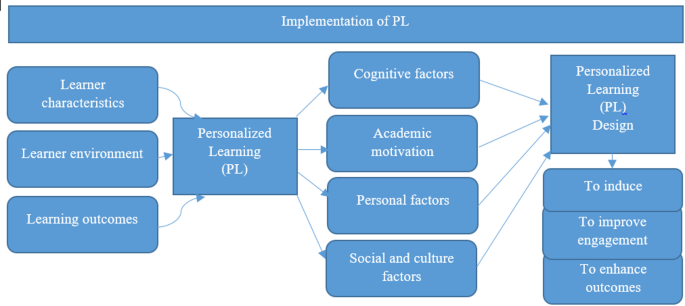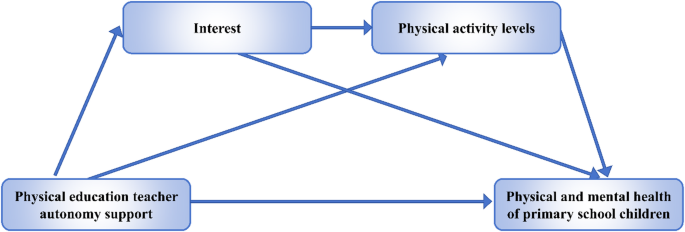Report on Educational Access for Students with Disabilities in Western Australia and Alignment with Sustainable Development Goals
Introduction: Assessing Commitment to SDG 4 and SDG 10
A significant gap persists in ensuring inclusive and equitable quality education for children with disabilities in Western Australia, challenging the state’s progress towards key Sustainable Development Goals (SDGs). Advocacy groups report that insufficient action is being taken to prevent schools from denying enrolment to students based on their disability. This practice directly contravenes the principles of SDG 4 (Quality Education), which calls for equal access to all levels of education for the vulnerable, and SDG 10 (Reduced Inequalities), which aims to empower and promote the inclusion of all persons, irrespective of disability.
Independent Review of the School Education Act
Recommendations for Legislative Reform to Uphold SDG Principles
An independent review of Western Australia’s school education laws was conducted to address systemic barriers to inclusion. The review’s principal author stated its recommendations were designed to “remove barriers and strengthen access and inclusion for students with disability,” aligning with the global commitment to non-discriminatory education.
- Primary Recommendation: The review proposed the development of new laws to explicitly prevent schools from considering a child’s disability as a factor when denying enrolment. This measure is critical for achieving SDG 10, Target 10.3, which seeks to eliminate discriminatory laws and policies.
- Additional Recommendations: The review put forward 14 other recommendations, including providing greater clarity on the use of restrictive practices and updating the legal definition of disability.
Government Response and Identified Policy Gaps
Commitment to Legislative Change and Stakeholder Concerns
The government’s response to the review has been met with criticism from disability advocates, who describe it as “lacklustre” and insufficient to drive the systemic change needed to meet SDG targets. The limited adoption of key recommendations raises concerns about the commitment to building strong, inclusive institutions as outlined in SDG 16 (Peace, Justice and Strong Institutions).
- Accepted Recommendation: The government fully accepted only one of the 15 recommendations—to update the definition of disability.
- Recommendations for “Further Consideration”: Five recommendations, including the crucial proposal on enrolment denial, were deferred for “further consideration.” The government cited existing obligations under the Equal Opportunity Act, a response that Developmental Disability WA (DDWA) characterized as an “escape route” from necessary policy implementation.
- Recommendations Supported in Principle: Nine recommendations were supported in principle, with implementation details pending.
Education Minister Sabine Winton acknowledged that current enrolment practices are “not meeting the expectations or needs of families with disabilities” and announced that the Department of Education would conduct a further review of its practices.
Systemic Barriers to Achieving Inclusive Education
Enrolment Practices and Institutional Capacity
Current legislation presents direct obstacles to achieving the goals of SDG 4. While schools must provide “reasonable adjustments,” principals are permitted to decline enrolment if support programs for students requiring “substantial or extensive adjustments” are at capacity. This loophole perpetuates a system of exclusion rather than inclusion.
Advocacy for System-Wide Reform
Advocates, including Symone Wheatley of Square Peg Round Hole, emphasize that access to quality education should not depend on the culture of an individual school but must be the guaranteed standard across the entire system. Families are frequently redirected from their local schools to education support centers that are already full, highlighting a systemic failure to provide equal opportunities.
- Teacher Training: The Minister has ordered a review of teacher training to better respond to the needs of students with disabilities, a necessary step for building the inclusive learning environments envisioned in SDG 4, Target 4.a.
- Disability Reform Unit: A new “disability reform unit” will be established within the education department to guide legislative changes, though advocates question if this will deliver the promised support led by neurodivergent and disabled people.
Ultimately, stakeholders demand that children with disabilities receive the same educational opportunities as all other children, a fundamental right essential for achieving the 2030 Agenda for Sustainable Development.
Analysis of the Article in Relation to Sustainable Development Goals
1. Which SDGs are addressed or connected to the issues highlighted in the article?
The article primarily addresses issues related to the following Sustainable Development Goals (SDGs):
-
SDG 4: Quality Education
This goal is central to the article, which focuses on the right to education for children with disabilities. The core issue discussed is the denial of school enrolment to these children, which directly contravenes the principle of inclusive and equitable quality education for all. The article highlights the need to “remove barriers and strengthen access and inclusion for students with disability.”
-
SDG 10: Reduced Inequalities
The article deals with the inequality faced by a specific vulnerable group: children with disabilities. By being denied enrolment, these children are not given the same opportunities as their peers, leading to significant inequality. The recommendation to develop laws ensuring schools “don’t consider a child’s disability when denying their enrolment” is a direct attempt to reduce this inequality and ensure equal opportunity.
-
SDG 16: Peace, Justice and Strong Institutions
This goal is relevant as the article discusses the legal and institutional frameworks governing education in Western Australia. The “independent review of Western Australia’s school education laws,” the government’s response, and the call for legislative changes all relate to building effective, accountable, and inclusive institutions. The debate revolves around strengthening laws (like the School Education Act) to protect the rights of children with disabilities and ensure non-discriminatory practices.
2. What specific targets under those SDGs can be identified based on the article’s content?
Based on the article’s content, the following specific SDG targets can be identified:
-
Target 4.5: Ensure equal access to all levels of education for the vulnerable, including persons with disabilities.
This target is directly addressed. The entire article is about the struggle to ensure children with disabilities have the same access to education as other children. The advocates’ goal to “ensure students can’t be denied school enrolment due to their disability” aligns perfectly with this target.
-
Target 4.a: Build and upgrade education facilities that are child, disability and gender sensitive and provide safe, non-violent, inclusive and effective learning environments for all.
The article implies this target by discussing the necessary conditions for inclusion. It mentions that principals can decline enrolment if “there are no more places in support programs to assist children requiring ‘substantial or extensive adjustments’.” This points to the need for adequate facilities and support systems. Furthermore, the Education Minister’s call for “further teacher training to better respond to the needs of students with a disability” is about creating a more inclusive and effective learning environment.
-
Target 10.3: Ensure equal opportunity and reduce inequalities of outcome, including by eliminating discriminatory laws, policies and practices.
The article highlights a discriminatory practice where a child’s disability can be a factor in their enrolment denial. The review’s recommendation to develop new laws to prevent this is a clear effort to eliminate discriminatory policies. The government’s current reliance on the “Equal Opportunity Act” and the advocates’ push for stronger, specific legislation within the “School Education Act” are central to achieving this target.
-
Target 16.b: Promote and enforce non-discriminatory laws and policies for sustainable development.
The discussion revolves around the adequacy and enforcement of non-discriminatory laws. The government’s response to the review, which involves giving “further consideration” to key recommendations rather than fully accepting them, is a debate about the commitment to promoting and enforcing such policies. The creation of a “disability reform unit” is an institutional step towards this goal, but advocates feel the response is “lacklustre.”
3. Are there any indicators mentioned or implied in the article that can be used to measure progress towards the identified targets?
Yes, the article mentions or implies several indicators that can be used to measure progress:
-
Rate of school enrolment for children with disabilities:
The primary issue is children being “denied enrolment.” An indicator would be the number and proportion of children with disabilities who are successfully enrolled in their local schools compared to those who are denied or redirected to special support schools.
-
Legislative and policy reform:
Progress can be measured by tracking the government’s adoption of the 15 recommendations from the independent review. The article states that “the government has only fully accepted one.” The number of recommendations accepted and implemented into law is a key indicator of progress towards eliminating discriminatory policies (Target 10.3) and enforcing non-discriminatory laws (Target 16.b).
-
Availability of support resources:
The article mentions that enrolment can be denied if “there are no more places in support programs.” Therefore, an indicator is the capacity of these programs, including the number of available places and the student-to-staff ratio. The mention of a “30 per cent increase in the number of education assistants” is a quantifiable indicator of increased support resources (Target 4.a).
-
Teacher training and capacity:
The Education Minister “had ordered a review of training practices” to help teachers better support students with disabilities. An indicator of progress would be the number of teachers who receive specialized training and the implementation of new training standards across the education system (Target 4.a).
4. Table of SDGs, Targets, and Indicators
| SDGs | Targets | Indicators Identified in the Article |
|---|---|---|
| SDG 4: Quality Education | 4.5: Ensure equal access to all levels of education for the vulnerable, including persons with disabilities. | The rate of successful school enrolment for children with disabilities versus the rate of denial. |
| 4.a: Build and upgrade education facilities and provide inclusive and effective learning environments for all. |
|
|
| SDG 10: Reduced Inequalities | 10.3: Ensure equal opportunity and eliminate discriminatory laws, policies and practices. | The number of recommendations from the independent review that are accepted and implemented by the government to reform the School Education Act. |
| SDG 16: Peace, Justice and Strong Institutions | 16.b: Promote and enforce non-discriminatory laws and policies for sustainable development. | Progress on the review and legislative changes to the School Education Act to explicitly prohibit discrimination based on disability in school enrolment. |
Source: abc.net.au






